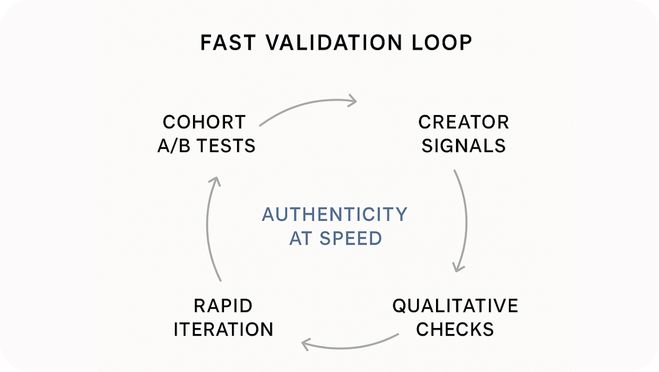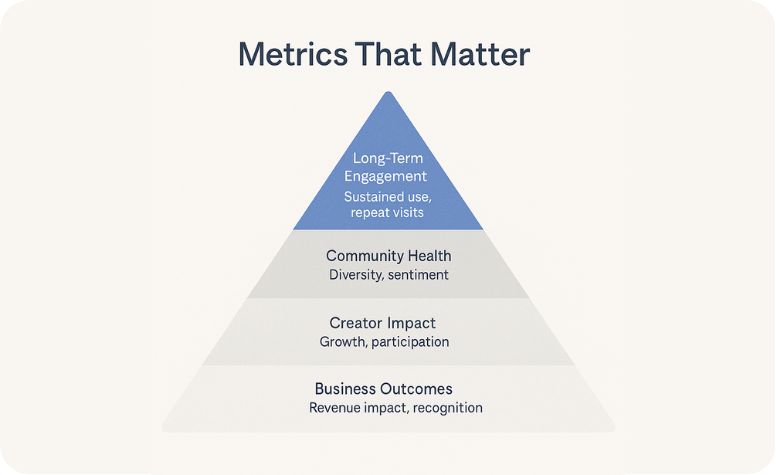In a world where culture moves faster than product roadmaps, features win when they become habits — not headlines. This column shares how cultural patterns are spotted early, validated with the right cohorts and creators, and scaled without losing the soul of the experience.
It also covers the governance and UX guardrails that protect authenticity, and the metrics that signal long-term health over short-term spikes. Whether you are a product manager, a founder, or a growth lead, I hope you’ll find this column helpful.
Pattern-Spotting: Signals That an Idea Can Become a Habit, Not Just a Feature
If a feature truly resonates, you see it first in the little rituals people create around it. I watch how users behave when we are not prompting them, and I look for the scrappy workarounds that signal unmet demand. These are the principles I rely on when deciding what might graduate from “nice idea” to daily habit.
Look for repeated, organic user behaviors. Early in the Instagram Trends project, we used mixed-methods research (surveys, interviews, behavioral analytics) to identify not just what users said they wanted, but what they actually did repeatedly. For example, we noticed users consistently sought trending content and creators, often using workarounds to find what was “hot” before it was officially surfaced.
Nascent trend detection. Instead of only surfacing what was already viral, we built ML models to spot emerging behaviors — hashtags, content formats, or creator collaborations gaining momentum but not yet peaked. This required the close tracking of engagement velocity, share rates, and cross-platform signals.
Creator and community signals. We focused on creators who were early adopters or trendsetters. Their behaviors often predicted broader adoption. When creators began to organically reference or remix a new meme or challenge, it was a strong indicator of habit-forming potential.
Feedback loops. We established direct channels with users and creators, looking for signs of repeat engagement, requests for more control, or creative uses of the feature we hadn’t anticipated.
Summary: Pattern-spotting is about identifying organic, repeatable behaviors that signal that a feature is becoming part of users’ routines, not just a one-off novelty. This requires a blend of quantitative analytics and qualitative insight, with a focus on early adopters and community leaders.
Fast Validation: Cohort Tests, Creator Signals, Qualitative Checks for Authenticity

Speed only helps if it preserves authenticity. My rule is simple: validate fast, but validate with the right people and the right signals. Here is how I pressure-test ideas before committing to a real runway.
Cohort-based A/B testing. We ran multi-arm tests across segments (teens, creators, new users) to measure engagement, adoption, and satisfaction with trend-surfacing features. This let us quickly validate which models and UI approaches resonated by cohort.
Creator signal monitoring. We tracked creator participation in trends as a leading indicator. If new detection surfaced content that creators adopted and remixed quickly, it was a strong sign of authenticity and viral potential.
Qualitative authenticity checks. Beyond metrics, we conducted regular interviews and feedback sessions. We looked for genuine excitement, creative use cases, and unsolicited positive feedback. Authenticity was also measured by trend diversity, ensuring we weren’t just amplifying the loudest voices.
Rapid prototyping and iteration. Using Meta’s internal ML experimentation platform, we tested 15+ models in parallel and iterated based on both quantitative and qualitative feedback.
Summary: Fast validation combines rigorous cohort testing with real-time creator and user input. Authenticity is validated not just by numbers, but by the depth and diversity of engagement from the community.
Scaling the Soul: Protecting Novelty While Rolling Out Globally (Governance, UX Guardrails)
Global scale can sand down the very edges that made a feature special. The goal is to keep novelty alive while protecting users and communities. This is the playbook I use to scale without losing the soul.
Governance frameworks. As we scaled Trends globally, we established clear governance to filter out high-risk or inappropriate trends. This involved close collaboration with privacy, legal, and policy teams, and automated plus human-in-the-loop review.
UX guardrails. We designed the experience to highlight novelty and serendipity, with controls to prevent spam, manipulation, or over-dominance of a single content type. For example, we limited frequency, enforced content diversity, and avoided repetitive exposure.
Protecting novelty. To avoid flattening trends into generic content, we prioritized early-stage, niche, and community-driven trends alongside mainstream ones. This kept the experience fresh and gave smaller creators a chance to break out.
Continuous feedback loops. Post-launch, we ran real-time dashboards and weekly reviews to monitor unintended effects such as trend fatigue or low-quality spread. We iterated quickly to address issues while maintaining the core spirit of discovery.
Summary: Scaling the soul means balancing global reach with authenticity and novelty. It requires robust governance, thoughtful UX design, and ongoing monitoring to keep the feature vibrant and true to intent.
Metrics That Matter: Long-Term Engagement, Community Health, Creator Impact
Spikes are easy to celebrate; staying power is harder to earn. When I evaluate impact, I look past clicks to signals that reflect real value for users, creators, and the business. Here are the metrics that indicate a feature is genuinely healthy.

Long-term engagement. We tracked sustained increases in time spent with trending content (+31.2% post-launch), repeat visits to the Trends tab, and the number of sessions driven by trend participation.
Community health. Metrics included trend diversity, reduction in negative feedback (irrelevant or harmful trends), and positive survey sentiment. We also monitored the balance between large, viral trends and smaller, community-driven ones.
Creator impact. We measured creator participation (+500k sessions annually), the number of creators surfaced as trending, and downstream growth in followers and engagement. We also tracked the adoption of new features by creators and their feedback on the tools provided.
Business outcomes. Beyond engagement, we looked at incremental sessions, ad-revenue impact, and industry recognition as indicators of leadership in real-time discovery.
Summary: The most meaningful metrics reflect sustained, healthy engagement and real value for users and creators. That includes not just raw usage, but the quality, diversity, and positive ecosystem impact of trends.
The work is simple to state and hard to practice — spot real patterns, validate with the right people, and scale with integrity. Do that consistently, and culture will meet you halfway.
Also Read:

